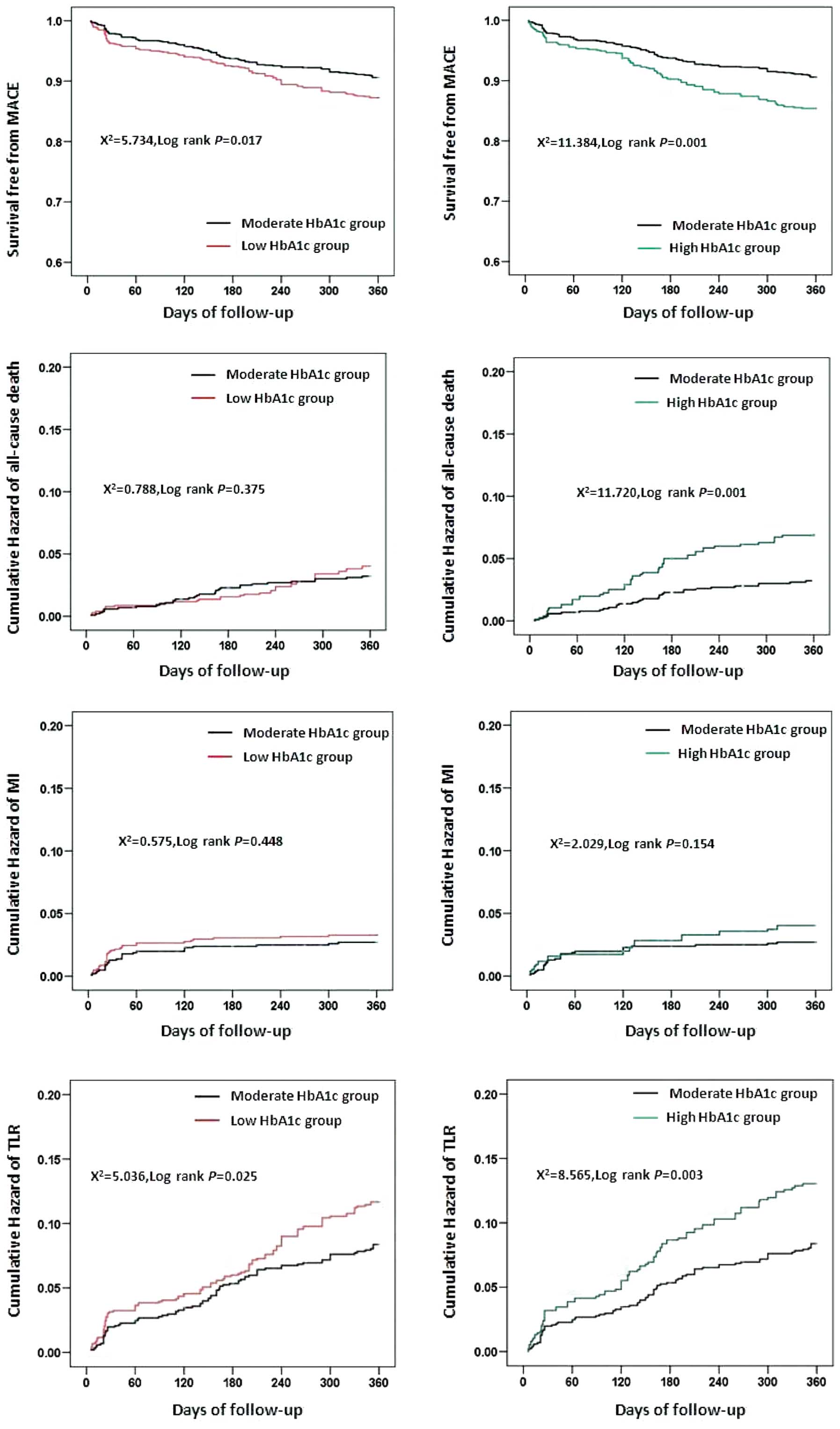|
1
|
Baber U, Gutierrez OM, Levitan EB, Warnock
DG, Farkouh ME, et al: Risk for recurrent coronary heart disease
and all-cause mortality among individuals with chronic kidney
disease compared with diabetes mellitus, metabolic syndrome, and
cigarette smokers. Am Heart J. 166:373–380. 2013. View Article : Google Scholar : PubMed/NCBI
|
|
2
|
Kim J, Chae YK and Chernoff A: The risk
for coronary heart disease according to insulin resistance with and
without type 2 diabetes. Endocr Res. 38:195–205. 2013. View Article : Google Scholar : PubMed/NCBI
|
|
3
|
Saely CH and Drexel H: Is type 2 diabetes
really a coronary heart disease risk equivalent? Vascul Pharmacol.
59:11–18. 2013. View Article : Google Scholar : PubMed/NCBI
|
|
4
|
Ueda H, Mitsusada N, Harimoto K, Miyawaki
M, Yasuga Y and Hiraoka H: Glycosylated hemoglobin is a predictor
of major adverse cardiac events after drug-eluting stent
implantation in patients with diabetes mellitus. Cardiology.
116:51–57. 2010. View Article : Google Scholar : PubMed/NCBI
|
|
5
|
Kataoka Y, Shao M, et al: Multiple risk
factor intervention and progression of coronary atherosclerosis in
patients with type 2 diabetes mellitus. Eur J Prev Cardiol.
20:209–217. 2013. View Article : Google Scholar
|
|
6
|
Gensini GG: A more meaningful scoring
system for determining the severity of coronary heart disease. Am J
Cardiol. 51:6061983. View Article : Google Scholar : PubMed/NCBI
|
|
7
|
Fatima N, u Zaman M, Ishaq M, Baloch DJ,
Bano M, et al: Impact of glycosylated hemoglobin (HBA1C) on the
extent of perfusion abnormalities and left ventricular dysfunction
using gated myocardial perfusion imaging and clinical outcomes in
diabetic patients. Nucl Med Commun. 34:489–494. 2013. View Article : Google Scholar : PubMed/NCBI
|
|
8
|
Rocco A, Heuschmann PU, Schellinger PD,
Köhrmann M, Diedler J, et al: Glycosylated hemoglobin A1 predicts
risk for symptomatic hemorrhage after thrombolysis for acute
stroke. Stroke. 44:2134–2138. 2013. View Article : Google Scholar : PubMed/NCBI
|
|
9
|
Su G, Mi SH, Tao H, Li Z, Yang HX, et al:
Impact of admission glycemic variability, glucose, and glycosylated
hemoglobin on major adverse cardiac events after acute myocardial
infarction. Diabetes Care. 36:1026–1032. 2013. View Article : Google Scholar : PubMed/NCBI
|
|
10
|
Control Group. Turnbull FM, Abraira C,
Anderson RJ, Byington RP, Chalmers JP, et al: Intensive glucose
control and macrovascular outcomes in type 2 diabetes.
Diabetologia. 52:2288–2298. 2009. View Article : Google Scholar : PubMed/NCBI
|
|
11
|
Action to Control Cardiovascular Risk in
Diabetes Study Group. Gerstein HC, Miller ME, Byington RP, Goff DC
Jr, Bigger JT, et al: Effects of intensive glucose lowering in type
2 diabetes. N Engl J Med. 358:2545–2559. 2008. View Article : Google Scholar : PubMed/NCBI
|
|
12
|
Zoungas S, Chalmers J, Ninomiya T, Li Q,
Cooper ME, et al: ADVANCE Collaborative Group: Association of HbA1c
levels with vascular complications and death in patients with type
2 diabetes: evidence of glycaemic thresholds. Diabetologia.
55:636–643. 2012. View Article : Google Scholar
|
|
13
|
Holman RR, Paul SK, Bethel MA, Matthews DR
and Neil HA: 10-year follow-up of intensive glucose control in type
2 diabetes. N Engl J Med. 359:1577–1589. 2008. View Article : Google Scholar : PubMed/NCBI
|
|
14
|
Agrawal L, Emanuele NV, Abraira C,
Henderson WG, Levin SR, et al: Ethnic differences in the glycemic
response to exogenous insulin treatment in the Veterans Affairs
Cooperative Study in Type 2 Diabetes Mellitus (VA CSDM). Diabetes
Care. 21:510–515. 1998. View Article : Google Scholar : PubMed/NCBI
|
|
15
|
Aguilar D, Bozkurt B, Ramasubbu K and
Deswal A: Relationship of hemoglobin A1C and mortality in heart
failure patients with diabetes. J Am Coll Cardiol. 54:422–428.
2009. View Article : Google Scholar : PubMed/NCBI
|
|
16
|
Xu L, Chan WM, Hui YF and Lam TH:
Association between HbA1c and cardiovascular disease mortality in
older Hong Kong Chinese with diabetes. Diabet Med. 29:393–398.
2012. View Article : Google Scholar
|
|
17
|
Cicek G, Uyarel H, Ergelen M, Ayhan E,
Abanonu GB, et al: Hemoglobin A1c as a prognostic marker in
patients undergoing primary angioplasty for acute myocardial
infarction. Coronary Artery Disease. 22:131–137. 2011. View Article : Google Scholar : PubMed/NCBI
|
|
18
|
Corpus RA, O’Neill WW, Dixon SR, Timmis GC
and Devlin WH: Relation of hemoglobin A1c to rate of major adverse
cardiac events in nondiabetic patients undergoing percutaneous
coronary revascularization. Am J Cardiol. 92:1282–1286. 2003.
View Article : Google Scholar : PubMed/NCBI
|
|
19
|
Hadjadj S, Coisne D, Mauco G, Ragot S,
Duengler F, et al: Prognostic value of admission plasma glucose and
HbA in acute myocardial infarction. Diabet Med. 21:305–310. 2004.
View Article : Google Scholar : PubMed/NCBI
|
|
20
|
Lemesle G, Bonello L, de Labriolle A,
Maluenda G, Syed AI, et al: Prognostic value of hemoglobin A1C
levels in patients with diabetes mellitus undergoing percutaneous
coronary intervention with stent implantation. Am J Cardiol.
104:41–45. 2009. View Article : Google Scholar : PubMed/NCBI
|















